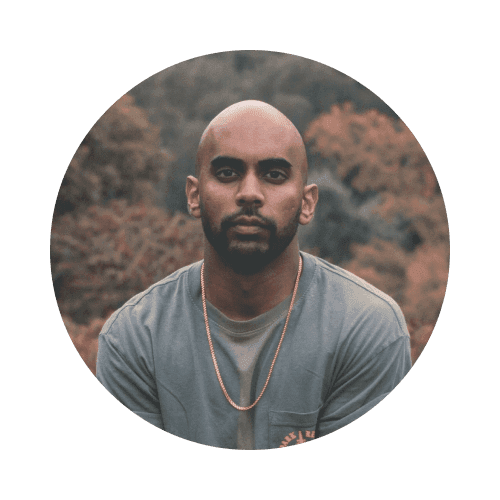2020
Year
3 months
Duration
Retail & Fashion
Category
UX, UI, Research, User Testing
My Role
About Senswear
Senswear is an iOS app for fashionistas and style mavens.
Deliverables
✅ User and market research
✅ Product ideation
✅ Sketches
✅ Storyboard
✅ Personas
✅ Experience Mapping
✅ UI Mockups
✅ Prototype
✅ User testing
Problem
People have trouble deciding what to wear in the morning due to internal and external factors: weather, mood, activities, and more.
Outcomes
I designed a mobile app that helps users decide what to wear.
"What-to-wear?", a question that has concerned humans ever since our ancestors put on their first loincloths. However, they probably cared more about survival as opposed to worrying about their outfit impressing others.
The modern-day is filled with several codes of dress — ways that humans signal to one another about their values and groups they are in.
01
The Challenge
Say hello to Amit, a 22-year-old influencer whose pronouns are they/them.
When Amit looks at their closest to decide what to wear, they are met with indecision.
As a trendsetter, being perceived as stylish is important to them.

"My outfits communicate my personality and interests."
Goals
Amit wants to feel confident and attractive everyday. Part their job is to stay in the know and curate clothing for content purposes.
Behavior
They spend lots of time putting together unique outfits. Amit also doesn't wear all the items in their closet.
Frustrations
Amit has difficulty deciding on outfit options and can't recall some items that they own.
It's no surprise, considering humans make roughly 35,000 decisions in a day.
02
The Research
I spoke to indecisive users just like Amit to learn more.
Why do people have trouble deciding what to wear in the morning?
External Factors
🌤 Weather varies from day to day
💼 Events and activities vary day to day
👔 Dress codes
🧺 Laundry and clean clothes
🔁 Repeating outfits
Internal Factors
💢 Emotion and mood
👯♂️ Desire to fit in
🔥 Desire to stand out
❌ Confidence
03
The Discovery
The common pattern that emerged was decision paralysis.
04
The Ideation
05
The Vision
I imagined a future where a smart mirror could anticipate wearers needs.
People stand in front of mirrors every day.
What could we do to make the wearing process more seamless, with fewer decisions?
06
The Design
Paper prototyping was a method that anticipated the user needs with emotional design
People stand in front of mirrors every day, and having done interviews and primary research, I found a lot of the trouble that people might experience in the morning was related to:
what specific clothes they have to wear, but also what the weather is like that day,
what events they have on their calendar,
Using a real physical thing such as like this posted easel helps me see how people might interact with a real life interface.
Paper prototype
Testing a mirror-first usability concept
Inspired by Luke Wroblewski, and his mobile-first usability concept, I imagined a mirror-first concept. Paper prototyping was critical to see how someone might interact with a large screen, and what areas may they have trouble, you know, using or in the easier areas that they can interact with.
Adjusting to COVID-19 in March 2020, meant testing remotely with a mobile prototype.
Wireframe sketches
The goal of the primary screen was to reduce decision paralysis by providing weather and style recommendations.
A more detailed user flow map was developed to focus on making easier decisions.
User flow map created in Whimsical.
07
The Solution
Make outfits simple and personalized — for anyone, one day at a time.
Get recommended outfits based on daily factors
View item details and save for later
Browse outfit inspiration
Experience Senswear's prototype from onboarding through outfit selection
A video walkthrough of the Senswear prototype. Live prototype available here.
Amit's new experience now meets their needs.

08
The Takeaways
🔑 What I learned from simplifying the what-to-wear process:
1. Find the right solution for users through iterative experimentation
Initially, starting with a broad topic of fashion & style, my hypothesis was that people had trouble deciding what to wear during hectic mornings.
2. Talk to the right target users
When I began the user research phase, I started by talking to users that were not as passionate about fashion and style. They certainly have problems that needed solving, but in order to create an innovative concept, I needed to talk to those most passionate about style.
3. Identify the product opportunity gap in the marketplace and go there
To pursue innovation, addressing the social, economic, and technology trends, I sought to create a transformative idea. The smart mirror is a product that has existed for a number of years but lacked widespread adoption. To prove the concept of a mirror, I tested with paper prototypes to test the physical idea and then used a mobile prototype to test both desirability and viability.
09
The Future
🔄 Future plans to explore with Senswear
1. Prototyping the smart mirror concept
The onset of COVID-19 in March 2020 prevented me from conducting further in-person testing with my smart mirror paper prototype. I started the Senswear project by identifying social, economic, and technology factors that could create innovation. Several ideas were sparked, and the smart mirror was one that excited me.







